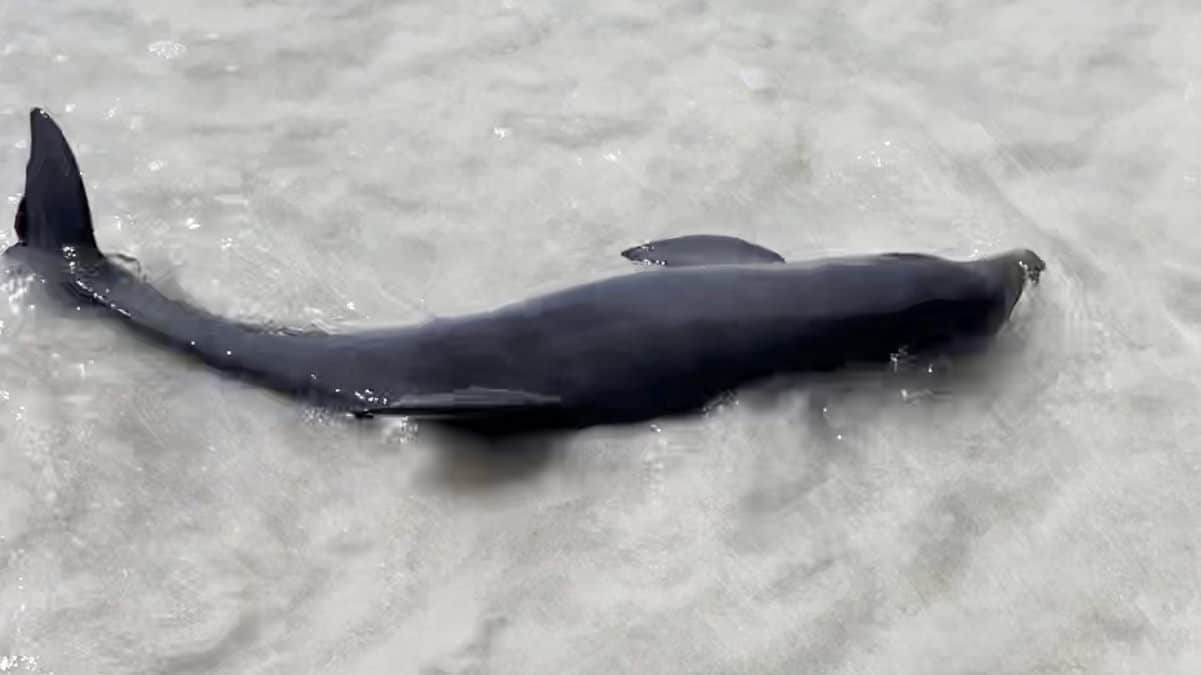It’s November 19, 2021, in Puerto Ayora, Galapagos.
I already bought my cassava chips in town at the convenience store for $1.75. And as always, I had some Panamanian rum ready in my flask.
I made the 30-minute walk to Tortuga Bay.
My only purpose in life — at this moment in wanderlust when I don’t care about tomorrow — was to lie down on my beach towel like a sunbathing marine iguana, enjoy the clean sand and turquoise water view, eat my chips, drink my rum, and listen to Avicii.
I know, it’s forbidden to drink alcohol at park sites in the Galapagos. But I do it discretely and quietly if that gives me any pardon.
But.
As I entered Tortuga Bay, most people turn right and walk along the shore. However, to the left, I saw a clan of juvenile Sally Lightfoot crabs running along the beach. “Damn, those guys run fast. Let me get some video footage of them.”
As I approached the crabs, I looked towards the water — an area I usually wouldn’t look if the crabs had not been there — and saw a beached fish.
It was still alive as it was struggling for deeper water. I went closer and thought it might be a shark as the shape quickly resembled a young blacktip reef shark.
To my sober surprise, it was a baby dolphin.
I’m not a dolphin expert, but with no other dolphins around or a pod visible out in the distant water, I thought the dolphin’s chances of survival were slim. The mother may have also abandoned it.
I also wondered if I could touch the dolphin and put it in deeper waters. It’s forbidden to touch animals in the Galapagos. It’s also normal in the Galapagos to let nature run its course. You’ll often see baby sea lions on the edge of death without their mother. No one is to intervene.
But this was a dolphin, something you don’t see every day, and a mammal with emotional thoughts like a human.
I decided to give this baby dolphin a slightly better chance of survival.
There was nobody nearby. I saw two Ecuadorians (Oscar and Carolina) from Quito who had just entered Tortuga Bay at a distance.
I yelled at them and made a waving arm motion to come over while pointing at the dolphin with my other hand.
They quickly realized what was happening and started running over.
We lifted the baby dolphin — I was amazed how light it was — and released it in deeper waters. But the baby dolphin kept returning to the shores.
I thought the dolphin was confused and couldn’t break the strong waves. Tortuga Bay had the red flag up that day, and swimming was forbidden unless you’re an experienced surfer.
We picked up the dolphin again and released it in deeper water this time, and it kept returning to shore. At this point, Caroline returned to the beach outside the water, and Oscar and I tried to cut off the dolphin’s path of returning towards the shore.
It was working. For a bit.
Then the water depth increased, and I was in deep waters. I couldn’t stand or swim back to shore with the rough waves. There were also nearby lava rocks that I did not want to smash into. Oscar asked me from a distance,” are you okay?” and I said, “no.” I didn’t realize how far away I was. He was still able to stand in the water.
There are no lifeguards at Tortuga Bay. Oscar ran for help.
I was getting tired, so I didn’t bother to try making it to shore. I thought this might be my day.
I decided to float on my back and conserve my energy. Then I started doing butterflies towards the lava rocks. I was worried I would hit them with my head, but luckily I was able to stand up as I went closer to the rocks. Man, I was tired. I was stuck in the water for a good 10 minutes with waves from the mob.
At this point, Oscar was running back towards the beach because he couldn’t find a life tube. He saw me sitting on the lava rocks and asked me if I was okay again. This time I replied, “yeah.” Oscar went back to try and help the dolphin.
I still had to try and make it to shore without my sandals and the gauntlet of lava rocks, marine iguanas, and crabs. That took another 15 minutes and wasn’t fun. Stepping on lava rocks barefooted hurts. And I was stepping on a lot of marine iguana poop. By the time I was on the sand again, I was exhausted with bloodied feet.
I couldn’t go back in the water to help the dolphin — too exhausted and dehydrated. But Oscar continued to do so at a safer distance.
Luckily at this point, other beachgoers noticed the baby dolphin and tried to help. But the dolphin would always return to shore. Even a Galapagos National Park volunteer on his second day of work tried to help. Also, a guy with snorkels and fins tried to bring the dolphin into deeper water — still no success.
Eventually, about 3 hours later, the Galapagos National Park came with a boat and took the baby dolphin. They released it into deeper water several kilometers into the ocean. It’s destiny from there for the baby dolphin to somehow find its pod with sonar.
I finally had the chance to eat those cassava chips and drink that rum. It was one expensive drink.
And I never got the footage of those speedy Sally Lightfoot crabs.

